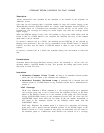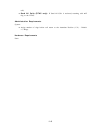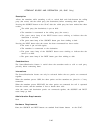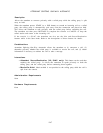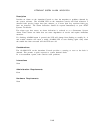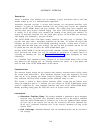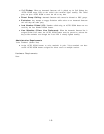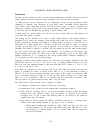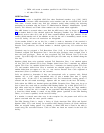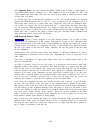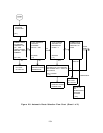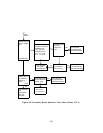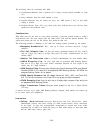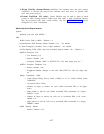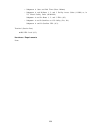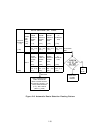—
FNPA calls made to numbers specified in the FNPA Exception List.
—
All other FNPA calls.
ARS Flow Chart
Figure 2-8 provides a simplified ARS flow chart. Bracketed numbers (e.g., [401], [601])
provide a link between ARS administrable action numbers and the associated item on the
flow chart.
Certain readers may find this reference useful when reading the following
description in association with the System
25 Administration Manual. Administrable System,
Station, Toll Allowed, and Trunk action numbers are also noted where applicable.
The ARS feature is accessed when a user dials the ARS access code. As shown on Figure 2-
8, the number dialed is first checked against the Emergency Numbers List. This list consists
of special service codes (911) and up to three customer-defined seven digit numbers. If the
number dialed matches one of the numbers on the list, the call is immediately routed via the
local CO facility. All user call restrictions are disregarded.
If the number dialed is not on this list, a check is made to determine if the terminal is
allowed to originate outside calls.
If the terminal is outward restricted, the caller receives
Reorder Tone; otherwise, the dialed number is checked against any toll restrictions that
apply.
Terminals may be assigned a Toll Restriction Class (1-4), or be unrestricted (Class 0).
Terminals assigned Toll Restriction Class 1 have the most privileges, those assigned Class 4
have the least privileges.
There are four associated Toll Call Allowed Lists (l-4) in the
system.
Up to 64 3-digit CO codes and 6-digit NPA plus CO codes may be divided among the
four lists.
Numbers dialed from voice terminals assigned Toll Restriction Class 1 are checked against
all four Toll Call Allowed (TCA) Lists; numbers dialed from Class 2 terminals are checked
against TCA Lists 2-4; numbers dialed from Class 3 terminals are checked against TCA Lists
3-4; and numbers dialed from Class 4 terminals are checked against List 4 only. If the
number dialed does not appear on a list,
the user receives Reorder Tone. Calls originated at
unrestricted (Class 0) terminals are not screened.
Calls are checked to determine if they are international calls or operator calls. Dialed
numbers “01” or “011” signify international calls, “0” plus a number other than “l” signify
operator calls.
If the call is an international call, the international routing pattern is
selected and the call routed accordingly.
Operator calls are routed via the local CO facility.
Calls within the HNPA are checked against the HNPA Exception Lists. There may be up to
four of these lists, each with an associated ARS Routing Pattern. Up to 800 (64 in R1V1) 3-
digit office codes may be divided among the four lists (eight entries may be 7-digit numbers.)
If a match is found, the call is routed via the associated ARS Routing Pattern. If no match
is found the dialed number is routed via the HNPA pattern (specified in the NPA Routing
Table ), or if none is specified, via the local CO facility.
If a number is entered more than once in the exception list, the pattern used will be the
pattern associated with the more specific number.
The NPA Routing Table is simply a listing of North American Plan NPAs and Special
Number NPAs (V2), each having an associated ARS Routing Pattern (all North American
NPAs are assigned routing pattern 1 by default). A dialed NPA that is listed in the table is
routed using the associated Pattern.
Calls to NPAs not listed are routed via the local CO
facility.
2-52



